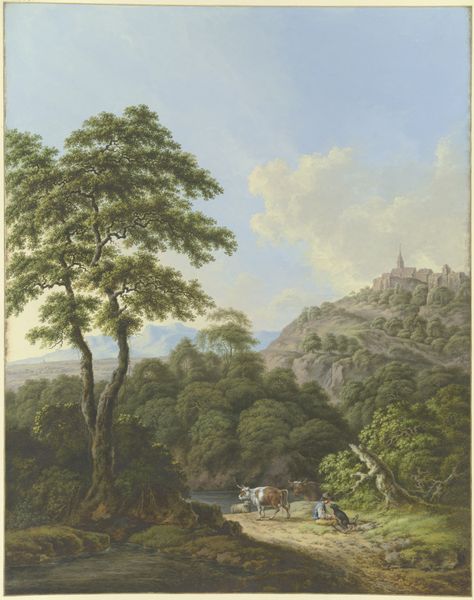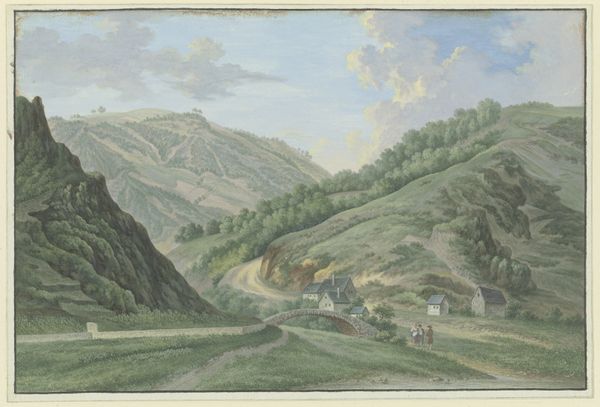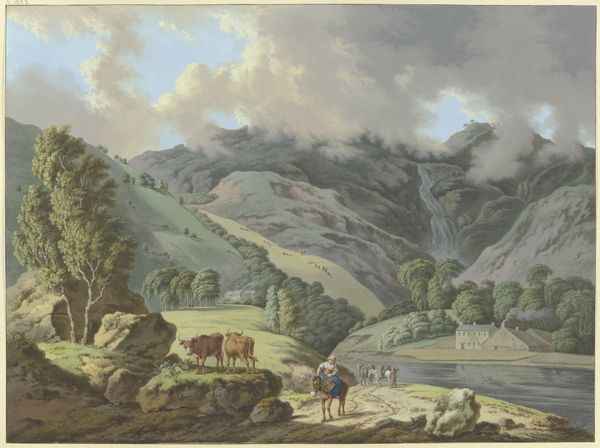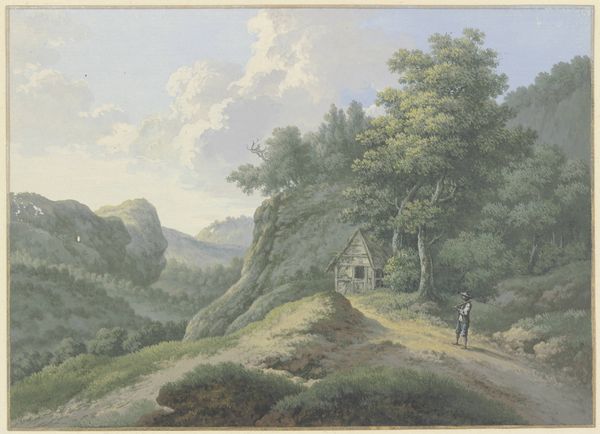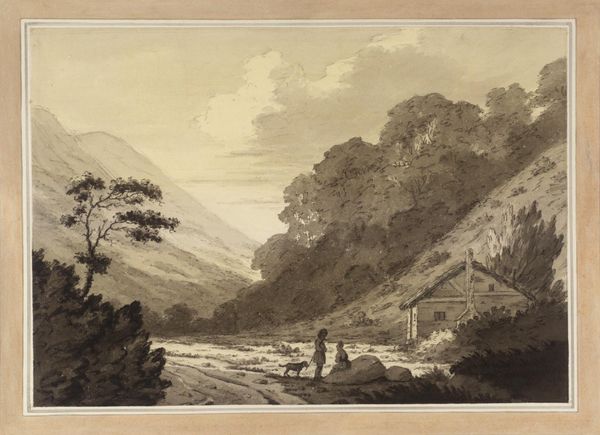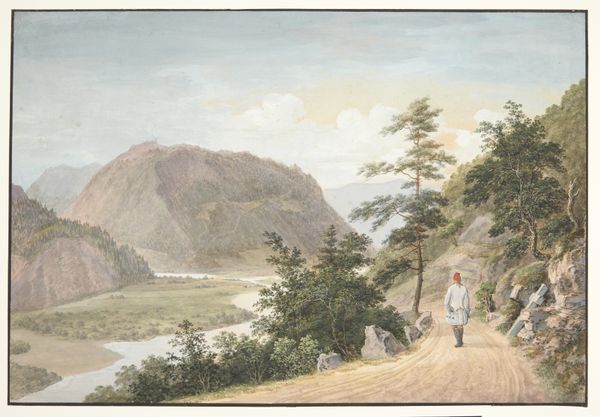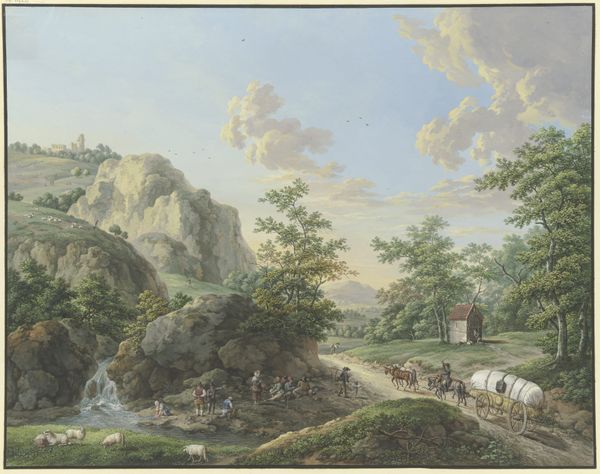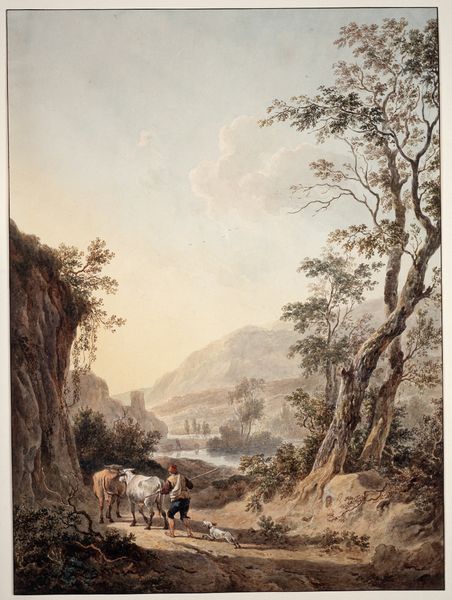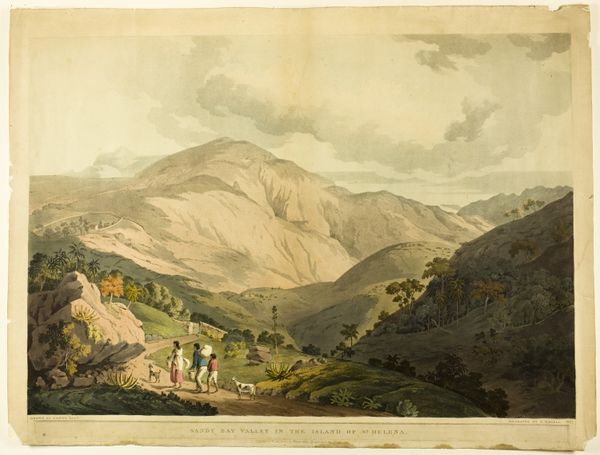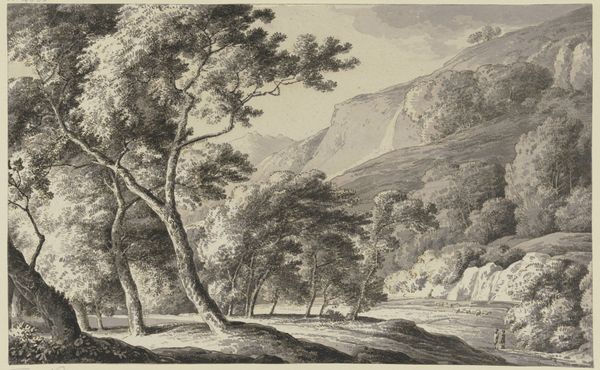
drawing, coloured-pencil, painting, paper, watercolor
#
drawing
#
coloured-pencil
#
painting
#
landscape
#
paper
#
watercolor
#
coloured pencil
#
romanticism
#
15_18th-century
#
watercolour illustration
Copyright: Public Domain
Editor: So, here we have Karl Franz Kraul's "Small village in a valley near the Rhine," a drawing using watercolour and coloured pencils. There's something very serene and picturesque about this valley, a kind of classical landscape feeling. What strikes you when you look at it? Curator: My eye is drawn to the figures populating the scene, each a carrier of meaning within this carefully constructed valley. Do you notice how they’re placed – the walking figures contrasted against those at rest near the cattle? Consider them symbols, acting as a bridge between the viewer and a certain idealized past. Editor: I hadn’t really considered that… more focused on the buildings. So the figures represent this bridge, how so? Curator: These weren’t random placements, think of each object as placed deliberately. Note the presence of religious buildings towering above the valley, a subtle commentary on temporal authority? And doesn’t the receding castle in the distance serve as a vestige of times long past, softened by memory? Kraul may suggest a yearning for something beyond the immediate. Do you feel this effect? Editor: Definitely. Now that you mention it, it is more than a pretty landscape. All the features work together in a story of culture and society that values this kind of peace. The people at rest even seem staged for our viewing. Curator: Indeed. Through the deliberate arrangements of those components, and by tapping into the Romanticism style, the valley becomes more than just a geographical location, doesn’t it? It’s a repository of cultural values that Kraul aims to connect with. Editor: That’s so fascinating; I was really off-track in my initial viewing. I appreciate seeing how the symbolic nature of Kraul’s artwork offers such an insight to historical contexts, reflecting how symbols change or persist. Curator: I concur; this careful consideration for detail really opened new perspectives for both of us today.
Comments
No comments
Be the first to comment and join the conversation on the ultimate creative platform.

